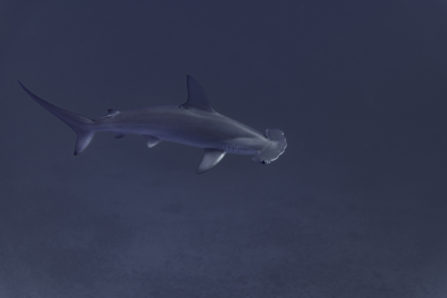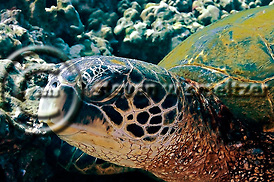Back in Maui and I cannot wait for my first Scalloped Hammerhead Shark dive off of Molokai. We come back here each year for this dive and it is one of my favorite dives on the planet. The rich biodiversity of this dive site, the great topography and of course, the Scalloped Hammerheads.

I have been diving on this site now for over 10 years and it never gets old. It is an advanced dive and the seas can be quite rough but oh, what a dive. If you get the chance to dive here, I highly recommend it.
I dive the site with Lahaina Divers, which is the only dive operator on Maui that goes to this site. Lahaina Divers is a great dive company, extremely professional and competent with a number of diver professionals that have been on Maui for a number of years.
Mokuhooniki Rock
Mokuhooniki rock is situated off the northeastern point of Molokai in the Pailolo Channel. The trip takes about an hour from of Lahaina Harbor. You do a two-tank dive on the site with a surface interval of about 45 minutes. I dive this on Nitrox to help with bottom time, especially given the short surface interval. This will also allow you to descend to depth when needed for that perfect shot. The dive site ranges from 60 to 110 feet although at the end of the dive you could be in water that is over 150 feet.
The Scalloped Hammerhead Shark, Sphyrna lewini is an amazing creature. The adult can reach up to 14 feet in length but those found around Mokuhooniki rock tend to be around 6 to 10 feet in length. They typically can be found swimming alone or in small groups of 2 and 3s. However, there are times when these sharks begin to gather especially towards the summer where you can see dozens swimming together on this site.
Scalloped Hammerhead
The Scalloped Hammerhead Shark tends to be a very shy shark. The worse thing any diver can do is to swim aggressively toward the

shark with their GoPro hoping for that amazing shot. The result, of this behavior, is the shark will turn and swim away and deny the rest of the dive group a chance to interact with the shark. The best way to observe most sharks is to stay still or move slowly. The Scalloped Hammerhead is curious and if your dive group is still and chill you may well get an encounter you will never forget. I have had these marvelous sharks circle me for over 7 minutes on on a dive. But again, your group typically needs to be very relaxed to be able to get these sharks interact with you and the rest of your dive buddies.
I like to stay around 60 to 65 feet and look into the blue to spot the sharks. When I see some that are close or look like they may come in close I slowly descend to their depth, typically about 80 to 90 feet. However, these sharks can be anywhere in the water column so make sure you keep your head on a swivel. I like to stay on the outside of the dive group and towards Molokai on this dive. Typically, I stay about 10 meters away from Dive Master. This position allows me to better interact with the sharks without worrying as much about other divers behavior. However, you will encounter sharks close to Mokuho’oniki Rock and in the middle of the channel. So don’t worry, just keep looking and watching your dive guide.
This is amazing dive site. Take your time and enjoy.
The pool is open…….

